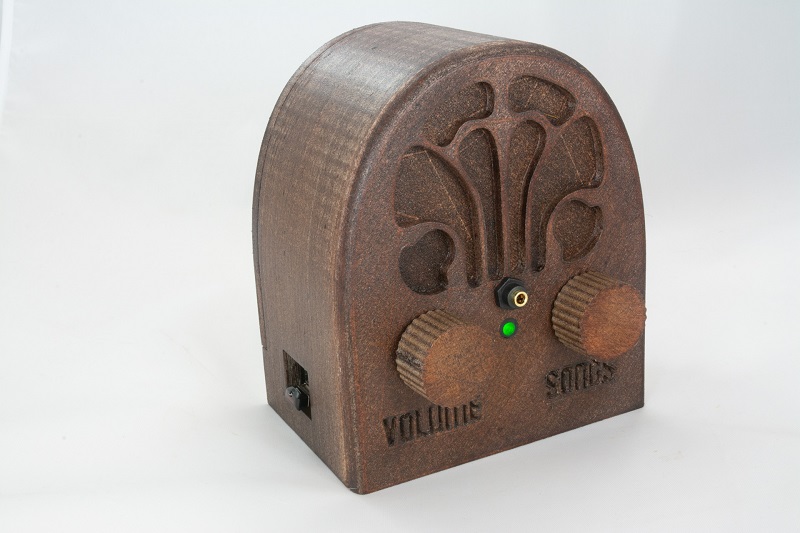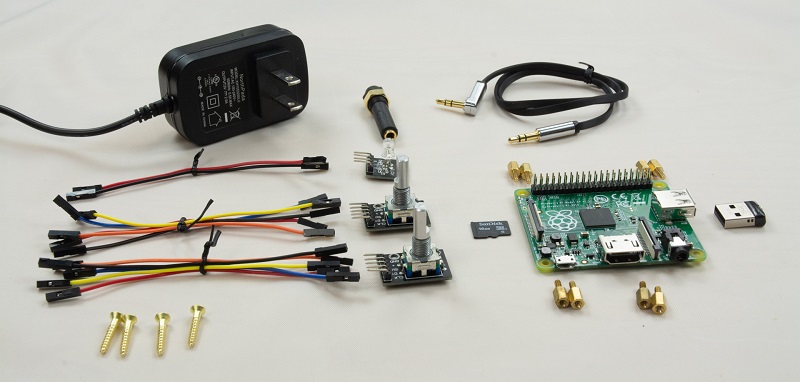At Makers Making Change, we believe in collaborating to make even more effective assistive solutions. On that note, we want to introduce two makers: Ross Porter, a Seattle-based maker who created the dementia-friendly music player, and Trey Bagley, who made the 3D-printed design.

The laser-cut design of the music player
This music player was Ross’s first maker project. He set out to create something that would bring joy to his father, who had dementia. The project is completely open-source, with the initial model consisting of a laser-cut case.
“My dad could no longer operate a CD player or iPod,” says Ross on his website, DQMusicBox.org. “But he could use the music player that I designed and made for him, because it operates like a familiar two-knob radio. I was inspired to make this by the documentary Alive Inside which shows the profound joy felt by some people with dementia when listening to their favorite music.”
The 3D-Printed Design

The stained 3D-printed cathedral-style design
Ross was now looking for a 3D-printed version of the case, so that the project would be more accessible to potential makers. We connected him to maker Trey Bagley, who worked with Ross to create an elegant cathedral-style shell. The filament is made of 40% sawdust and can be stained to make it appear closer to wood. The design stays just as simple to use.
“If you imagine someone with dementia, they gradually forget the present, but their old memories are strong,” explains Ross. “Particularly, memories formed before the age of 21. Thus, Trey went about creating something that someone, even if their memory does not expand past the 1950s, would still recognize – something that they have experienced as a child.”
“I thought it was a very interesting design challenge,” says Trey. “We did a lot of research, pulled up some specific examples, mostly from people on EBay selling antiques and vintage collectibles. The wood filament and the staining brought out a ton of detail. The filament can replicate the wood grain on a flat surface.”
An Easy and Fun Project

These are all the parts you need. Get making!
At the Seattle Mini Maker Faire in September 2017, Ross provided some participants the required materials to build a device then and there. “I did get seven people to sign up and make the device – and all seven succeeded in making it. It takes an hour and fifteen minutes on average.”
Do you know anyone in your life or in your community who could benefit from this music player? You can easily order the parts online and get either a laser-cut or 3D-printed shell. As Ross says, a 13-year-old can build it!
You can find the instructions for both models or request the project on our website. If you have questions or suggestions about the music player, contact Ross at rosswesleyporter@gmail.com. If you have ideas about the existing 3D-printed shell or find any errors, contact Trey at tbornottb@sbcglobal.net.
 Makers Making Change
Makers Making Change
Discussions
Become a Hackaday.io Member
Create an account to leave a comment. Already have an account? Log In.